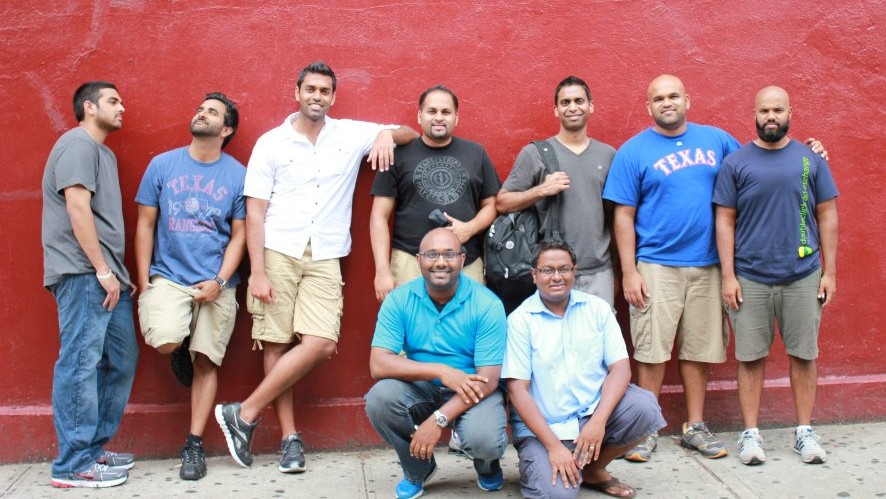I love the South Asian church. I believe the South Asian church is one of the key platforms for the mobilization of second-generation South Asian-Americans. Unfortunately, most South Asian churches have become more of a playhouse than a platform. What happened? It is because most South Asian churches have become unhealthy.

Photo Courtesy of Ben Heine (cc)
Please read the following warning signs of unhealthiness (and suggestions for a remedy). These signs are valid for any church not just the South Asian church. I challenge you to be honest and determine if your church is headed in the wrong direction. If it is, then I hope that you will be a catalyst for change. I want to help you do that. Don’t give up on church.
Here are 5 warning signs of unhealthy behavior:
Sign #1: Becomes Ethnocentric not Ethnic-Specific
Ethnic-specific churches are important. The focus of these kinds of churches is to reach unreached people groups that are similar to them. It is strategic. The opportunity to contextualize the Gospel, celebrate culture, and meet ethnic minority (e.g. immigrant) felt-needs is huge! Your church should go after this mission unapologetically.
However, be aware of ethnocentric behavior. Examples of this include, believing that South Asian culture is superior or always right. Or South Asian cultural norms should be imposed upon others. Ultimately, South Asian norms can become the lens to judge everything else – this is dangerous.
What’s a remedy?
Recruit and mobilize non-South Asians to help you reach more unreached South Asians. You don’t have to change your mission. In fact you will get better at your mission. It’s a beautiful feeling to work with those unlike you in common Kingdom purposes.
The difference between ethnic-specific and ethnocentric is subtle – it is a matter of openness and health.
Sign #2: Creates Calloused Environment for Visitors
Visitors should be welcomed into a church… I can almost understand the awkward behavior around non-South Asian visitors. Usually immigrants are nervous that their broken English will not be understood. Or immigrants are afraid that the visitor may have malicious motives. The list of excuses is long… understandable, but not right.
Now, what is plain silly is when South Asian visitors are treated with the same calloused environment. We ignore them. We stare at them. Who are their relatives? Are they from the same part of India? Are they the same church denomination? Crap, I know them… awkward smile. Is it just me or isn’t this behavior crazy?
What’s a remedy?
Treat each visitor as God’s gift to your church. Empower a hospitality team to welcome, guide, and answer questions as visitors experience your church. Encourage this team to love everyone that enters the doors. The next world-changer might walk in this weekend – don’t miss out.
God brings visitors. Church health dictates whether we partner with God to reach them or not.
Sign#3: Disregards Partnership with Other Communities
Churches should partner with other organizations. Most South Asian churches have a hard time partnering with other South Asian churches, let alone partnering with other organizations. It is important that opportunities for cross-cultural communication are being made available for church members.
Whether it is across ethnic lines, socio-economic disparity, or religious/denominational difference, the church must embrace the challenge to befriend others unlike them. This allows the church to grow in awareness and love for their neighbors. I know one church pastor that befriended the Imam from a local mosque. It created fantastic opportunities for interaction and mission.
What’s a remedy?
Do it. Reach out to the church across the street that is different ethnically. Partner together and do something for the city. Reach out to the South Asian group that is different from you denominationally or religiously. Partner together to rectify injustices impacting other South Asians globally.
Partnership is indicative of health. “Us versus Them” language is toxic. Meet new people unlike you.
Sign #4: Preserves Culture over Kingdom Values
Culture is never an excuse to sin. South Asian churches that allow pride, self-righteousness, prejudice, abuse, and/or hypocrisy to thrive in the name of culture are extremely unhealthy. God loves culture, but God hates sin. South Asian churches must be honest and take steps to redeem broken parts of our culture. It is tricky to celebrate beauty and redeem brokenness, but that is a major part of the mission of a South Asian church.
What’s a remedy?
Engage cultural brokenness head-on. Educate the church about this damaging behavior. Create safe places for rebuke and healing to happen at church. Recruit counselors on the pastoral staff and work out issues slowly and lovingly.
Preserving culture is great but not at the cost of damaging lives – a healthy church knows the difference!
Sign #5: Associates Guilt with the Dissenting Voice
Often churches despise dissenting voices because they stir up disunity. Often this is the case. The dispute about carpet color or other frivolous topics is disunity at its finest. Please just compromise and be done with these simple issues. However, when there is a legitimate problem at church, a dissenting voice is helpful to hear and understand.
Unfortunately, the South Asian church has a way of associating guilt or hatred towards anyone not in alignment with the majority voice; therefore shutting down the dissenting voice. This creates a guise of unity but will only lead to more trouble later. I’ve learned that many people just want to be heard, not necessarily followed. Making room for the dissenting voice gives the church the chance to grow.
What’s a remedy?
Allow important issues to be filtered through groups of people so that you get adequate feedback. Consider having an elderly person, an immigrant, a second-gen, a woman, a non-South Asian, and other church leadership work together on a task force before making a decision on an issue so that all voices can be heard.
At times, the dissenting voice is the prophetic voice. Healthy churches are open to hearing the truth.
Don’t give up on the South Asian church! Each of these warning signs can be remedied. I encourage you to be a part of the change at your local church. It will be tough, but it will be worth it for the next generation. Be an everyday world changer! Start today!


